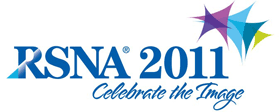
Abstract Archives of the RSNA, 2011
LL-CHS-MO7A
Incidentally Detected Lung Nodules: Compliance of Radiologists, Clinicians, and Patients with Fleischner Guidelines
Scientific Informal (Poster) Presentations
Presented on November 28, 2011
Presented as part of LL-CHS-MO: Chest
Carole A Ridge MD, Presenter: Nothing to Disclose
Bolanle Bukoye MS, Abstract Co-Author: Nothing to Disclose
Brian Hobbs MD, Abstract Co-Author: Nothing to Disclose
Jacob Y Shin MA, Abstract Co-Author: Nothing to Disclose
Mark D Aronson MD, Abstract Co-Author: Nothing to Disclose
Phillip M. Boiselle MD, Abstract Co-Author: Nothing to Disclose
Ronald L. Eisenberg MD, JD, Abstract Co-Author: Nothing to Disclose
Daniel A Leffler MD, Abstract Co-Author: Nothing to Disclose
Scot B. Sternberg MS, Abstract Co-Author: Nothing to Disclose
David H. Roberts, Abstract Co-Author: License agreement, Gilead Sciences, Inc
To determine compliance of radiologists and ordering clinicians with Fleischner Society guidelines for management of incidentally detected lung nodules and to determine the factors associated with patients undergoing appropriate surveillance CT scans.
A computerized search of radiology reports was used to identify patients with 1 or more lung nodules reported on CT scans of the chest, neck, or abdomen from January through June 2007. Patients in whom a lung nodule was initially detected by CT during the study period were included. Patients with known malignancy and those undergoing surveillance for known lung nodules were excluded. Patient demographics, smoking history, CT study type, nodule characteristics, radiologist recommendations, compliance with Fleischner guidelines and clinical outcomes were recorded with 4 year follow-up by medical record review.
The study population included 188 patients (93 male, 95 female) with mean age of 59 ± 20 years. Smoking history was positive in 88 (47%), negative in 63 (33%) and unknown in 37 (20%). Mean nodule size was 6 ± 4 mm, and nodule density was solid in 166 (88%) and subsolid in 22 (12%). 115 (61%) of nodules were identified on chest CT and 73 (39%) were detected on non-chest CT. 68% of CT reports made a specific recommendation regarding surveillance, but only 28% of reports were concordant with Fleischner Society guidelines. Documented patient contact (p<0.0001), referring physician contact (p<0.0001), and chest CT as the initial study type (p= 0.02) were associated with an increased likelihood of appropriate surveillance CT scans. Age, gender, ethnicity, language, and insurance type were not associated with an increased risk of lack of follow-up CT scans. Nodule outcomes included stability (27%), resolution (9%), growth (2%), decrease in size (2%), interval calcification (2%), unrelated death prior to follow-up (4%), and “not a nodule” (1%). 1 lung cancer was diagnosed.
Compliance with Fleischner Society recommendations was suboptimal, but the rate of malignancy of incidentally detected nodules was <1%. Documented patient or physician contact increases the likelihood of compliance with surveillance recommendations.
Documented communication with referring physicians and patients has the potential to improve the likelihood of adequate surveillance of lung nodules, especially when detected on non-chest CT scans.
Ridge, C,
Bukoye, B,
Hobbs, B,
Shin, J,
Aronson, M,
Boiselle, P,
Eisenberg, R,
Leffler, D,
Sternberg, S,
Roberts, D,
Incidentally Detected Lung Nodules: Compliance of Radiologists, Clinicians, and Patients with Fleischner Guidelines. Radiological Society of North America 2011 Scientific Assembly and Annual Meeting, November 26 - December 2, 2011 ,Chicago IL.
http://archive.rsna.org/2011/11034342.html

